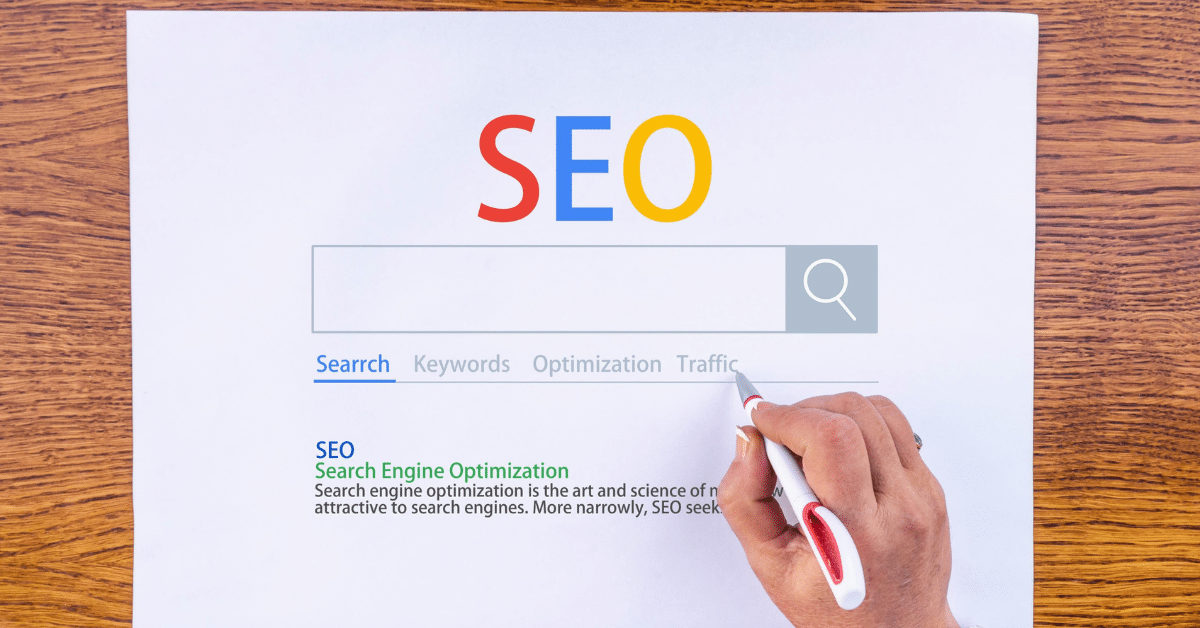
For SEO professionals and digital marketers, these shifts demand an expanded optimization strategy. New frameworks have emerged alongside SEO, namely Answer Engine Optimization (AEO) and AI Optimization (AIO), each addressing different aspects of modern search.
SEO: The Foundation of Online Visibility
Search Engine Optimization (SEO) is how websites have traditionally been optimized to rank on platforms like Google and Bing. The goal is straightforward: increase organic (unpaid) traffic by appearing prominently for relevant search queries (Ngugi, 2025). Core SEO techniques include on-page optimization (e.g., refining content, titles, meta tags), off-page strategies (earning backlinks and mentions to build authority), and technical improvements (ensuring fast load times, mobile-friendliness, proper indexing) (Ngugi, 2025). Decades of refining these tactics mean that SEO remains foundational to digital marketing, without it, even high-quality content may remain invisible on the web.
Despite the headlines, SEO is not dead. Google’s algorithms still rely on classic ranking signals, and businesses continue to see meaningful traffic and revenue from organic search. However, what has changed is that ranking #1 on a SERP may no longer guarantee traffic if users’ questions are answered via snippets or other SERP features. Traditional SEO’s focus on driving clicks to your website must now coexist with strategies to appear within the search results themselves. In other words, SEO is evolving. It’s no longer just about competing for rank, but also about competing to be the answer. As one SEO expert put it, “SEO is no longer just SEO. It’s a holistic, hybrid discipline where content, data, AI, UX, and local relevance converge” (Sharma, 2025).
AEO: Answer Engine Optimization
Answer Engine Optimization (AEO) is the practice of structuring and optimizing content to provide direct answers to user queries, rather than simply aiming for a higher rank. This concept arose alongside the proliferation of voice assistants (Amazon’s Alexa, Apple’s Siri, Google Assistant) and Google’s shift toward zero-click searches, where the answer is displayed on the SERP itself (Nahser, 2025). AEO is fundamentally answer-focused: the goal is to make your content the one that voice assistants read aloud or that populates a featured snippet or “People Also Ask” box on Google (Ngugi, 2025). In short, AEO helps your content be the answer, not just a link to an answer.

Key characteristics of AEO include focusing on likely questions users ask, providing succinct answers, and implementing structured data to help machines interpret your content. An AEO-oriented content strategy might involve creating an in-depth FAQ section, using heading tags that match common questions (“What is ___?”), and immediately answering those in the text that follows. The content should be concise, factual, and structured. Research shows the average voice search result is only about 29 words long (Joshi, 2024).

To excel in AEO, content creators often:
- Lead with the answer (Nahser, 2025).
- Use structured data and schema markup (Ngugi, 2025).
- Optimize for Featured Snippets and PAA (Ngugi, 2025).
- Adopt a conversational tone for voice (Nahser, 2025).
- Demonstrate E-E-A-T (Experience, Expertise, Authoritativeness, Trustworthiness) (Nahser, 2025).
By implementing AEO strategies, SEO specialists align their content with modern search behaviors. Content optimized for answers can capture visibility even when users don’t click through. It builds brand recognition and authority. “AEO positions your content as the source of truth in answer engines and AI-powered interfaces” (Ngugi, 2025).
AIO: AI Optimization and the Era of Generative Search
As artificial intelligence becomes intertwined with search, AI Optimization (AIO) has emerged as another pillar of modern SEO strategy. AIO refers to optimizing content for AI-driven search engines and assistants. This includes Google’s new AI overviews in search results, as well as AI chatbots like Bing Chat, ChatGPT (with browsing enabled), Claude, or any large language model (LLM) interface that provides answers with cited sources (Prerender.io, 2025).
The rise of generative AI in search is not theoretical – it’s happening now. Google’s Search Generative Experience began integrating AI summaries at the top of search results for many users in 2023–2024, and by early 2025, over 13% of Google queries were triggering an AI Overview on the results page (Prerender.io, 2025). Microsoft’s Bing, meanwhile, integrated the GPT-4 powered Bing Chat into its search interface. A significant and growing chunk of search traffic is now mediated by AI – users get an AI-composed answer that pulls from one or more sources, rather than a list of ranked links.
For SEO professionals, AIO strategy asks a new question: how do we ensure our content is chosen by the AI as part of its answer? One digital agency succinctly described the nuances: “AIO is about helping machines understand your content. AEO is about answering people’s questions” (Nahser, 2025).
- Key elements of optimizing for AI (AIO) include:
- Structuring content for machine understanding (Nahser, 2025).
- Comprehensive use of schema and metadata (Nahser, 2025).
- Technical SEO for AI crawlers (Prerender.io, 2025).
- Emphasis on context and entities over keywords (Nahser, 2025).
- Accuracy, recency, and citability (Garanko, 2025).
AIO’s impact is evident in recent studies. In 2025, Amsive’s analysis of 700,000 keywords found that when Google displays an AI-generated overview, the click-through rate on traditional organic listings drops significantly – by 15.5% on average. Non-branded queries saw nearly a 20% decline in clicks when an AI answer was present (Guevara, 2025).
In practical terms, AIO and AEO efforts overlap significantly. Both require clear, structured content and an emphasis on quality. One useful way to distinguish them is: AEO is oriented toward answering the user’s question in the best way possible, whereas AIO is oriented toward making your content the most machine-accessible and machine-relevant source for answering those questions.
Preparing Clients for the AI-Driven Search Era
1. Educate and Set Expectations
Begin by explaining why search is changing. For example, share that Google now often provides AI-generated summaries that cite sources, which can siphon clicks from the organic listings (Guevara, 2025). Voice search usage continues to grow — over 153 million Americans use voice assistants regularly as of 2025 (Kumar, 2025).


2. Invest in Structured Data and Site Technical Health
Explain that schema markup and clean site architecture are now directly tied to gaining enhanced visibility (Ngugi, 2025). If the client’s site is built on heavy JavaScript frameworks, make the case for implementing dynamic rendering so that AI crawlers can actually see the content (Prerender.io, 2025).
3. Revamp Content Strategy for Direct Answers
Encourage formatting choices that have proven effective, like succinct paragraphs (40–60 words) that directly answer a question, roughly the length Google prefers for featured snippets (Joshi, 2024).


4. Emphasize Quality, Credibility, and E-E-A-T
Google’s emphasis on E-E-A-T has only grown stronger with AI overviews. Clients in sensitive categories must support content with data and cite reputable sources (Prerender.io, 2025).
5. Leverage AI Tools (Strategically) in SEO Workflows
Tools like ChatGPT or SEO-specific AI tools can assist with tasks like content ideation and FAQ generation. However, they should supplement—not replace—expert judgment (Sharma, 2025).


6. Monitor, Report, and Adapt
Traditional SEO reports should be augmented with insights into AEO/AIO performance. For example, track how many featured snippets the site is earning, and monitor AI-generated summaries for source citations (Guevara, 2025).
Embracing an Expanded SEO Paradigm
References
Garanko, J. (2025, May 4). Semrush AI overviews study: What 2025 SEO data tells us about Google’s search shift. Semrush. https://www.semrush.com
Goodwin, D. (2025, March 11). Google Search is 373x bigger than ChatGPT search. Search Engine Land. https://searchengineland.com
Guevara, W. (2025, April 16). Google AI overviews: New CTR study reveals how to navigate negative SERP impact. Amsive. https://www.amsive.com
Joshi, S. (2024, June 10). 70+ voice search statistics you need to know in 2024. G2. https://www.g2.com
Kumar, N. (2025, May 8). Voice search statistics 2025 (usage data & trends). DemandSage. https://www.demandsage.com
Nahser, C. (2025, June 8). SEO isn’t dead—it’s just smarter: AIO, AEO & GEO explained. Matchbox Design Group. https://matchboxdesigngroup.com
Ngugi, L. (2025, April 21). AEO vs. SEO: Key differences and importance in digital marketing. SEO.com. https://www.seo.com
Prerender.io. (2025, June 11). SEO vs. AIO vs. GEO: Understanding the new search landscape. Prerender.io. https://prerender.io
Sharma, V. (2025, May 23). SEO vs AIO, GEO, AEO, and SXO: Decoding the modern SEO landscape. Medium. https://medium.com

Need Help With Your Web Copy?
Brittany Degnan
Author
Related Articles
Google Ads Success Stories
Google Ads has become an indispensable tool for businesses aiming to expand their online presence and boost sales. These real success stories from various clients in various industries highlight the power of Google Ads in driving tangible results. From startups and...
How Google Measures Search Quality
Google, the leading search engine, handles billions of searches every day. However, many marketers, business owners, and advertisers wonder how Google delivers useful, high-quality search results. The answer lies in Google's various methods, including user surveys,...
WiT Group Named Among Charlotte’s Largest Digital Advertising and Marketing Agencies
We’re excited to share some incredible news! The Charlotte Business Journal has recognized WiT Group in the following lists for 2024: Charlotte’s largest digital advertising and marketing agencies Top-earning advertising and marketing agencies Largest advertising and...
Stay Up to Date With The Latest News & Updates
Join Our Newsletter
Stay up to date with the latest news and marketing tips!



Recent Comments